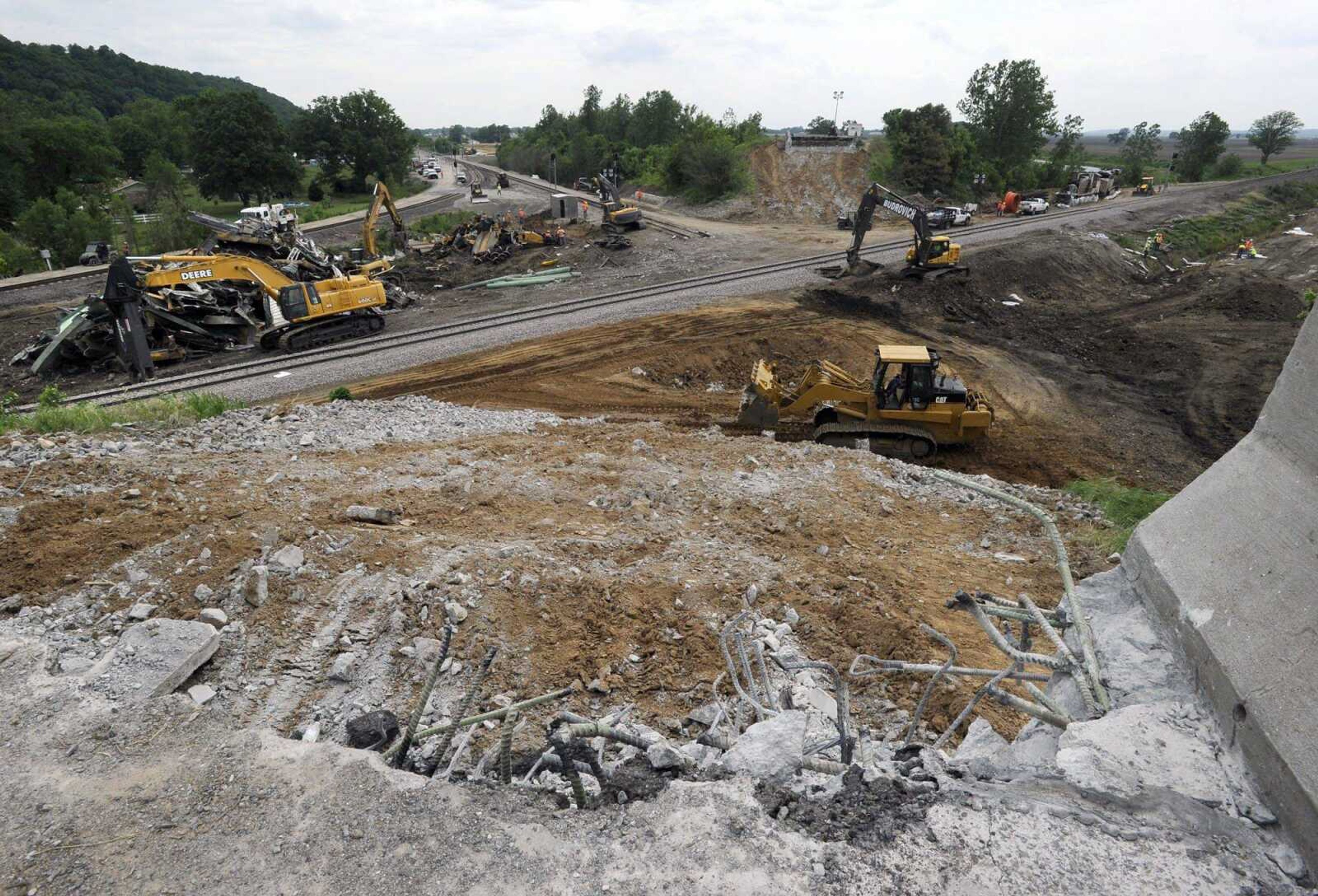Workers scramble to clean up after two trains collide
ROCKVIEW, Mo. -- The site of the Route M overpass in Scott County was a beehive of activity Monday as more than two dozen workers cleared rail cars, damaged automobiles and tons of mangled metal from the site of a cargo train collision. Seven people were hurt -- none seriously -- in the crash, which occurred about 2:30 a.m. Saturday...
ROCKVIEW, Mo. -- The site of the Route M overpass in Scott County was a beehive of activity Monday as more than two dozen workers cleared rail cars, damaged automobiles and tons of mangled metal from the site of a cargo train collision.
Seven people were hurt -- none seriously -- in the crash, which occurred about 2:30 a.m. Saturday.
On a sunny Memorial Day afternoon, at least seven backhoes, cranes and endloaders operated simultaneously to clear debris.
Workers from R.J. Corman Derailment Services and Budrovich, a heavy equipment company, coordinated efforts. The fruit of their labors was readily apparent: A pile of twisted metal taller than the top of a backhoe sat next to a large, open area where a section of track had been removed.
The bridge decking had been cleared away, and rebar protruded from the broken concrete remnants of each end of the collapsed overpass.
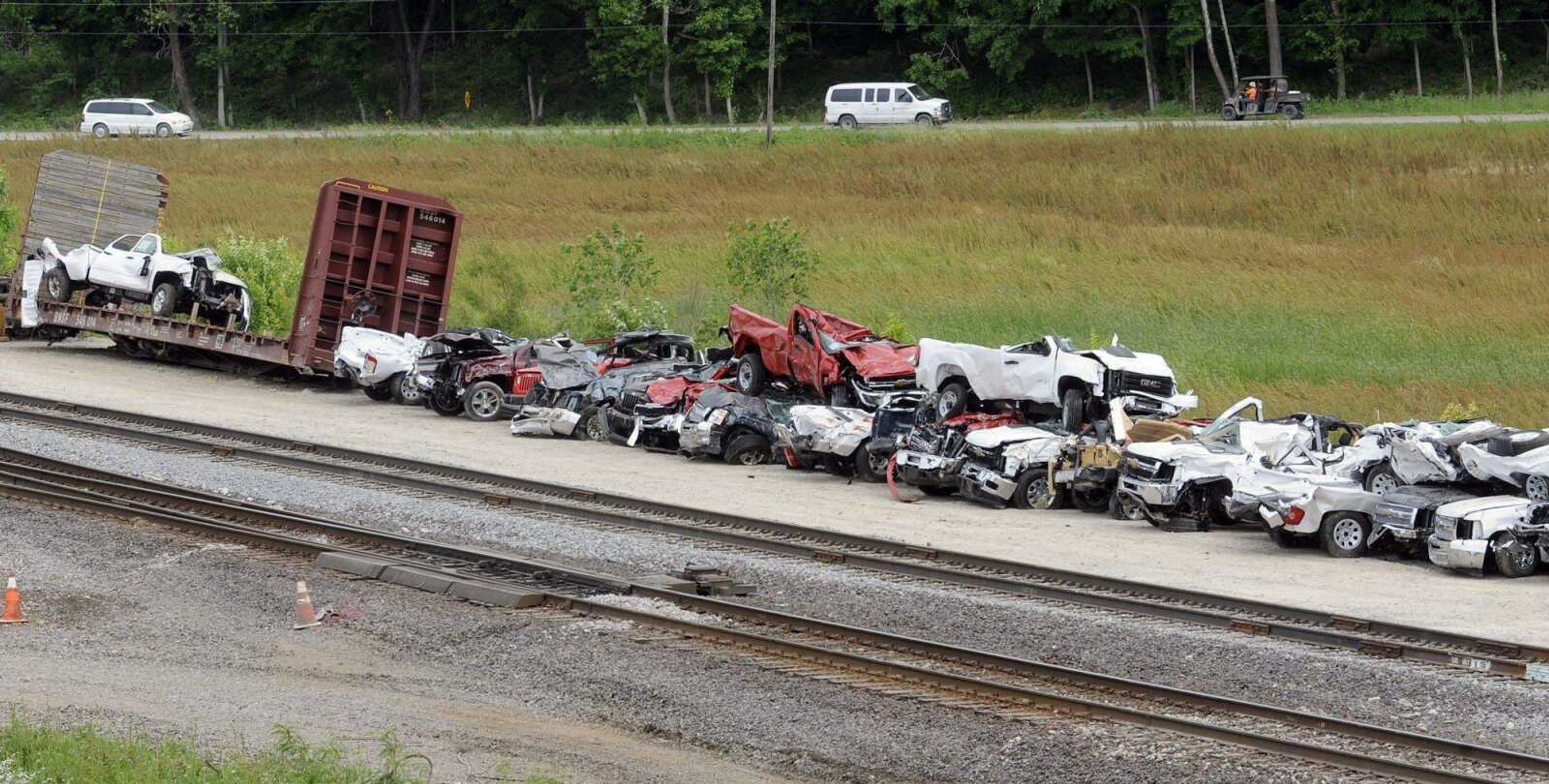
Heavy equipment tracks crisscrossed the bare soil where the track had been as workers used a backhoe and a forklift to remove a still-drivable pickup truck from the top level of a rail car that had been transporting vehicles.
More than 20 cars in various states of damage were lined up along the right of way next to the track, and upended rail cars lay along the shoulder of Route M leading to the overpass.
Official information was scarce Monday, but a worker at the scene estimated at least 20 different contractors had been on the scene at one point.
The overpass collapsed after a Union Pacific train struck a Burlington Northern Santa Fe train, derailing several rail cars and knocking down one of the bridge's support pillars in the process, the National Transportation Safety Bureau reported.
Mark Davis, director of corporate relations and media for Union Pacific, referred questions to the NTSB.
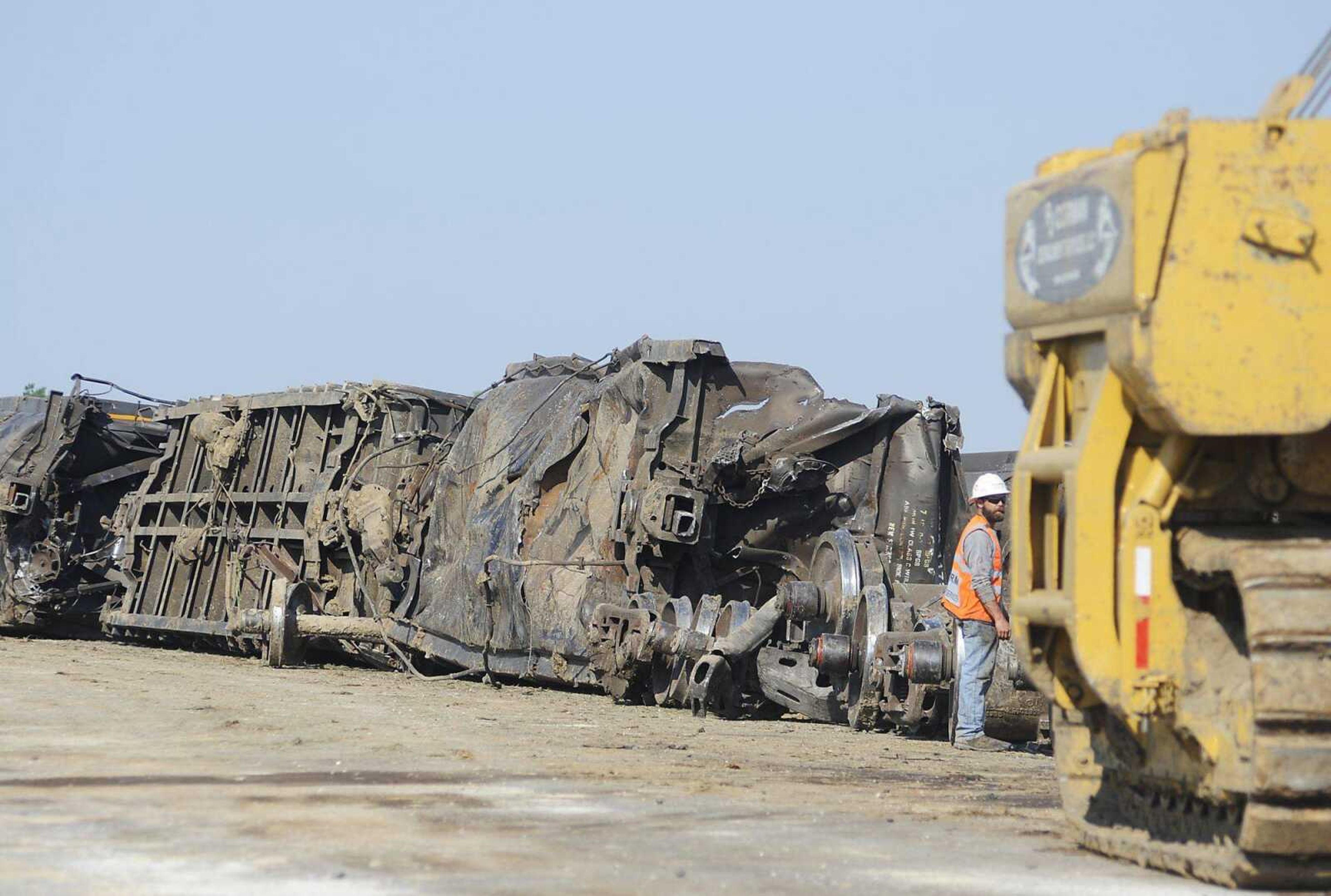
"The investigation's still ongoing," NTSB spokesman Terry Williams said Monday. "Investigators will probably still be there for another three to four days."
Williams said investigators had gathered the information they needed from the crash site.
"We've gathered the information that we need in terms of our documentation, and we've turned it back over to them," he said, referring to the two railroad companies whose trains were involved in the collision.
Robert Sumwalt, an NTSB board member, has said it could take up to a year for investigators to analyze the information and reach a conclusion.
In a Sunday news conference posted on ntsb.gov, Sumwalt said the conductor and engineer on the BNSF train initially were unaware it had been hit.
"For the first few minutes after the collision, all the BNSF crew was aware of was that their train had gone into emergency braking," which happens whenever a train loses air pressure, he said.
Sumwalt said the conductor told investigators he thought an air hose might be loose and discovered the aftermath of the collision when he exited the train to see why it was braking.
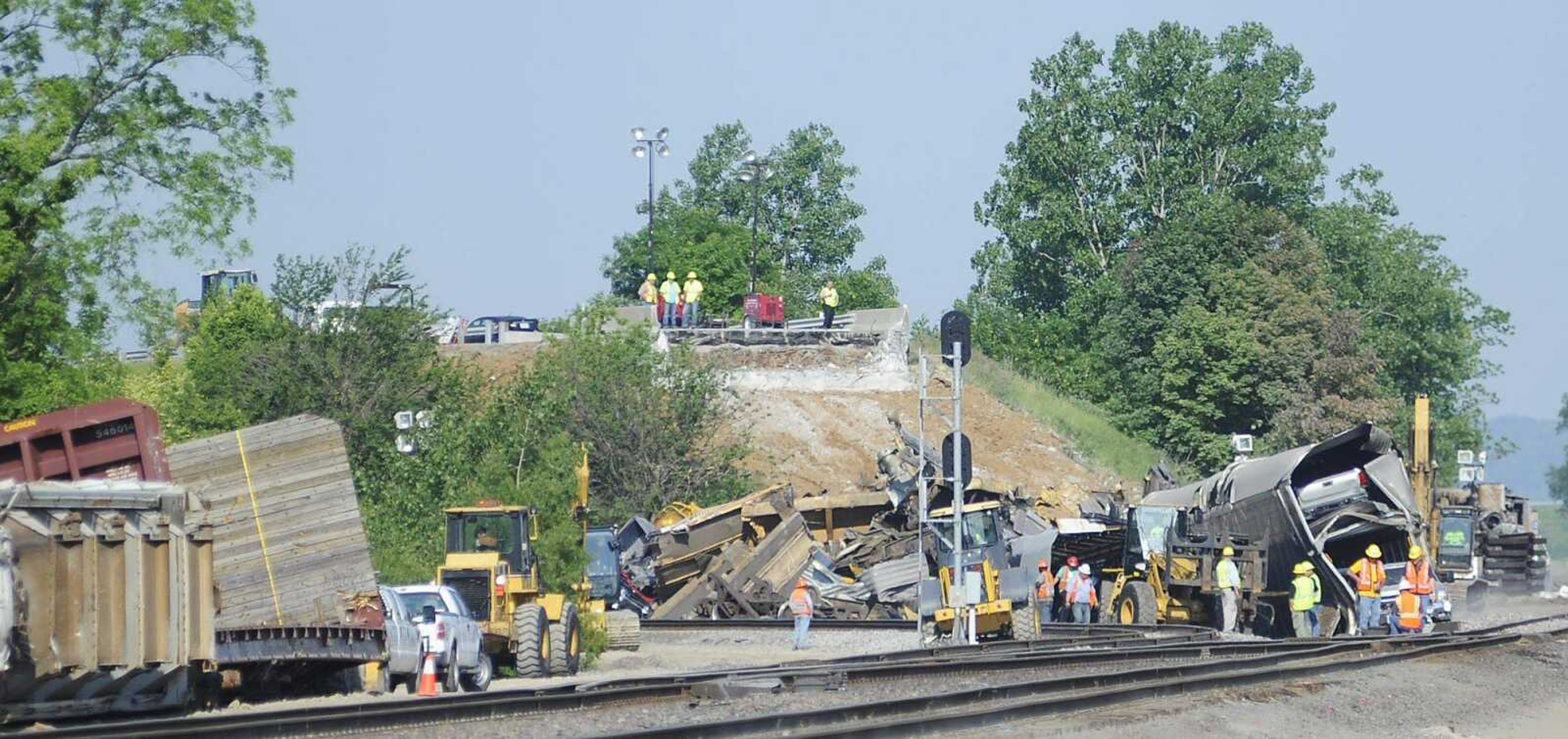
The point of impact was about a dozen cars back from the three locomotives, Sumwalt said.
He declined to speculate on the reason for the collision, saying the cause was still under investigation.
"What we can say factually is that the BNSF train was struck about a dozen cars back," Sumwalt said. "How did that happen? Why did that happen? That's what our investigation is trying to find out."
Investigators downloaded signal records, photographed and measured the bridge, and recovered camera data from locomotives, he said.
A camera on the BNSF train's third locomotive -- which was facing backward -- gives a clear view of the bridge, Sumwalt said.
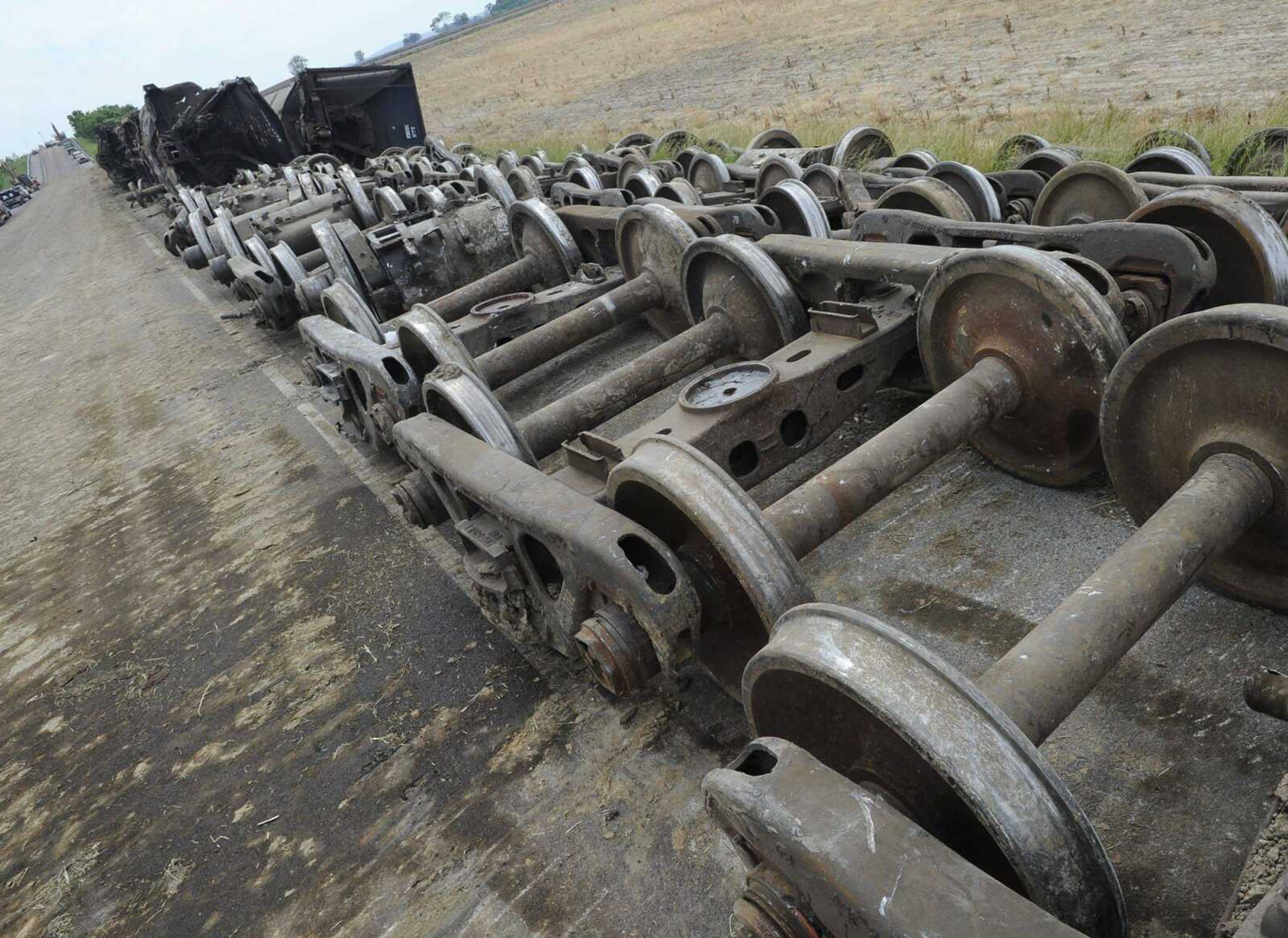
"What that camera does show is it shows the bridge, it shows the bridge collapse, and it shows the cars on the bridge," he said.
The bridge, which is 367 feet long, was constructed in 1988 and was most recently inspected Feb. 25, when the Missouri Department of Transportation rated it a seven on a scale of one to nine, Sumwalt said.
The Federal Highway Administration considers a seven to be good condition, he said.
Two of the five spans on the overpass collapsed after a rail car hit a support column, Sumwalt said.
"It had a rail car basically wrapped around it in somewhat of a 'U' shape, and it collapsed as a result of that collision," he said.
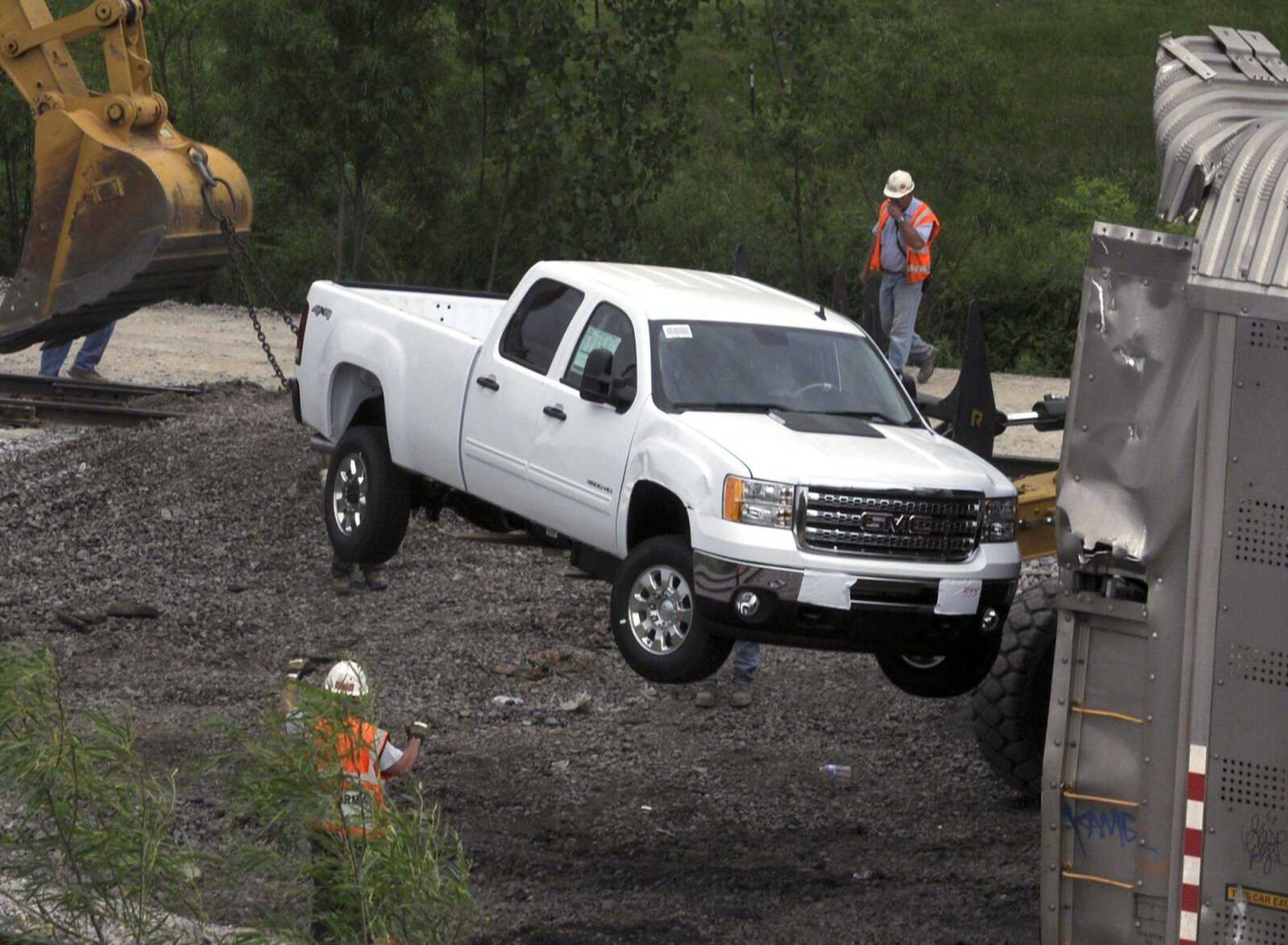
The pillar had been hit once before, in January, but was inspected and found to have no structural damage, Sumwalt said.
According to an Associated Press report, a MODOT engineer estimated the bridge replacement cost at $3 million.
"The damage is very extensive," Mark Shelton said. "We're going to end up removing the entire bridge and completely replacing it."
He said the bridge is expected to reopen in early September.
epriddy@semissourian.com
388-3642
Pertinent address:
Route M near Rockview, Mo.
Connect with the Southeast Missourian Newsroom:
For corrections to this story or other insights for the editor, click here. To submit a letter to the editor, click here. To learn about the Southeast Missourian’s AI Policy, click here.
